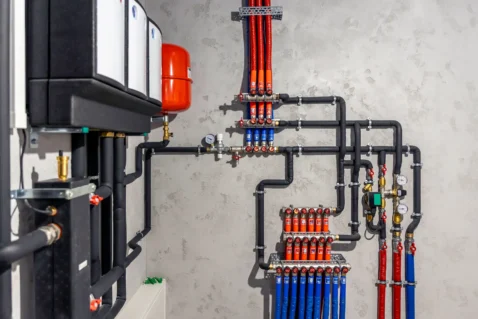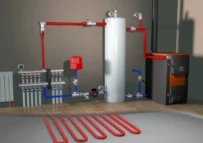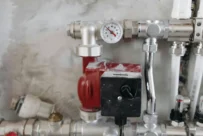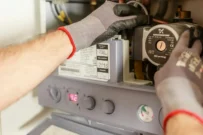
October 2, 2025 /
Heating system
You are building or have already built a house. Whatever its size, large or small, to keep it cozy and warm all year round, you need a reliable and convenient heating system. Perhaps you are doing everything yourself and want to build it on your own, or maybe you will entrust it to experienced specialists who will take care of the future “life” and operation of your heating system. In any case, you will be choosing the equipment. We hope you will turn to us, and the heating system in your home will be comfortable and convenient. You can heat a room in the old-fashioned way with a stove or fireplace, or you can place an electric heater in every room — but such heating is not the topic of this article. The subject of this article is comfortable hydraulic (liquid-based) heating systems, in which a heat carrier circulates, warming the house through heating devices.
Useful information
1. Problem definition
- You develop a need for a product or service. This need turns into a task or problem that must be solved.
- It is important to clearly define what exactly needs to be solved and how much time you have.
- If you are free, you can act calmly and thoughtfully. If you are busy with work or everyday matters, the problem creates additional stress that you want to get rid of as quickly as possible.
The main thing: do not rush and try to make the right decision so that you don’t regret your choice later.
2. Gathering information
Possible sources of information:
- Contact acquaintances or friends offering the necessary goods and services.
- Ask people you know who have already faced similar tasks which companies helped them.
- Use advertising and open sources: the internet, catalogs, newspapers.
When choosing a company, pay attention to:
- the presence of a license (if required);
- the company’s capabilities;
- experience and completed projects;
- customer reviews;
- warranty period;
- after-sales service (if necessary);
- solution cost;
- completion time.
3. Decision making
- Compare all options and determine how well they match your goals and expectations.
- Choose the best alternatives.
- In practice, this often turns out to be easy: just review the list of goals and requirements, evaluate the options, and decide which one will lead to the best result.
4. Implementation
- Agree on the completion date with the company’s representative.
- Sign the contract and go ahead!

Chimney
Modern chimneys: requirements for materials, shape, and insulation for boilers

Heating system automation
How automation maintains comfortable temperature and protects the heating system

Room for gas equipment
Standards for boiler rooms: from air inlets to minimum façade distances

Gas equipment – part 3
Efficient heating: boiler capacity calculation and an overview of alternative heaters

Gas equipment – part 2
Condensing boilers: how they work, efficiency, and when they pay off.

Gas equipment – part 1
Modern gas boilers: floor-standing and wall-mounted solutions for houses and apartments


